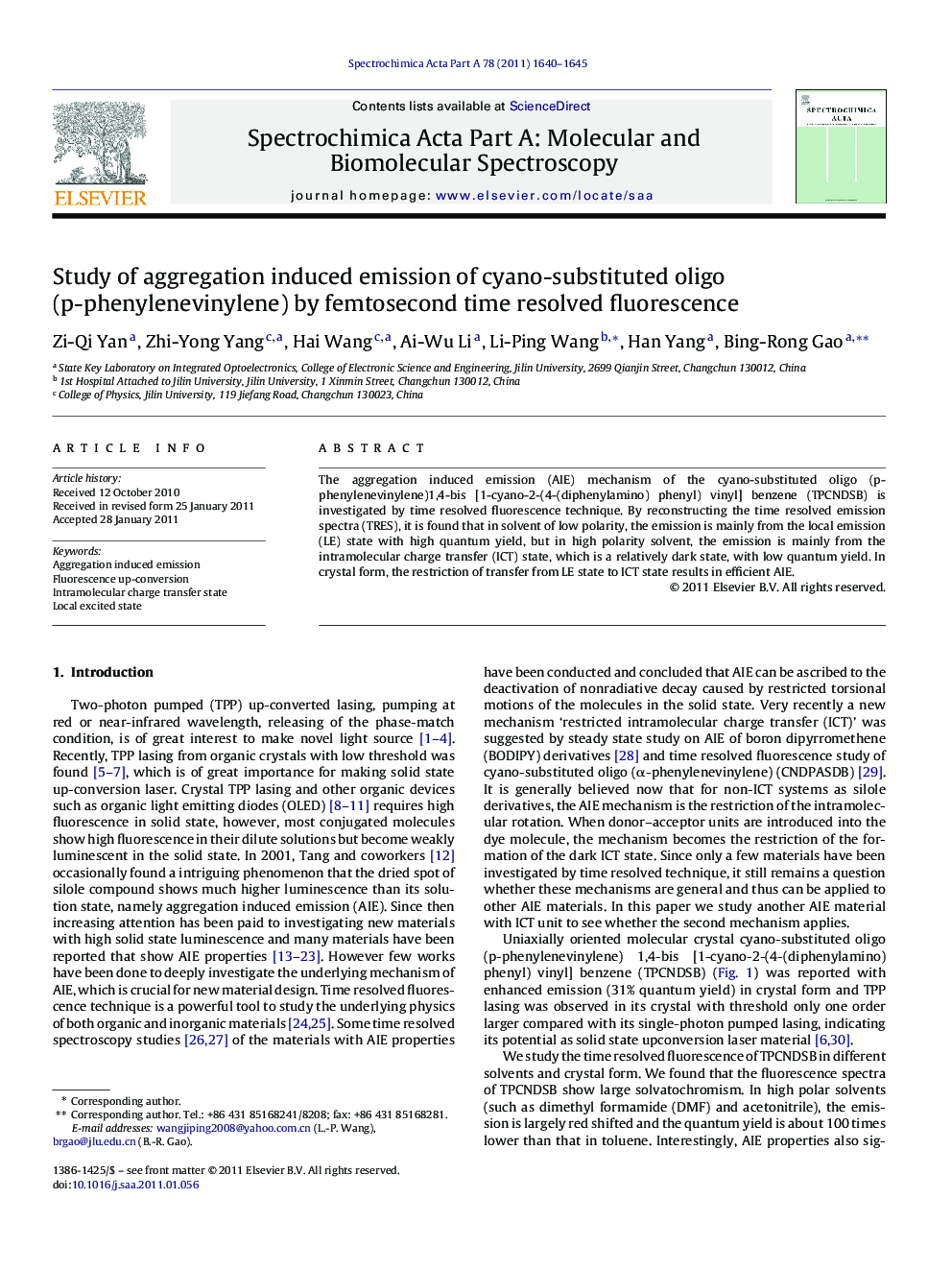| Article ID | Journal | Published Year | Pages | File Type |
|---|---|---|---|---|
| 1236192 | Spectrochimica Acta Part A: Molecular and Biomolecular Spectroscopy | 2011 | 6 Pages |
The aggregation induced emission (AIE) mechanism of the cyano-substituted oligo (p-phenylenevinylene)1,4-bis [1-cyano-2-(4-(diphenylamino) phenyl) vinyl] benzene (TPCNDSB) is investigated by time resolved fluorescence technique. By reconstructing the time resolved emission spectra (TRES), it is found that in solvent of low polarity, the emission is mainly from the local emission (LE) state with high quantum yield, but in high polarity solvent, the emission is mainly from the intramolecular charge transfer (ICT) state, which is a relatively dark state, with low quantum yield. In crystal form, the restriction of transfer from LE state to ICT state results in efficient AIE.
Graphical abstractMechanism of aggregation induced emission (AIE) of TPCNDSB is studied by time resolved fluorescence technique.Figure optionsDownload full-size imageDownload as PowerPoint slideResearch highlights► In solvent of low polarity, the emission of TPCNDSB is mainly from Local excited state with high quantum yield. ► In solvent of high polarity, the emission transfer from LE state to intramolecular charge transfer (ICT) state in about 1.5 ps, resulting in low quantum yield. ► In crystal form, the low polarity local environment and the restriction of the tortional motion restrict the transfer from LE state to ICT state, resulting in efficient aggregation induced emission enhancement.
